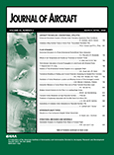
JOURNAL OF AIRCRAFT
Scope & Guideline
Advancing Aircraft Design and Technology.
Introduction
Aims and Scopes
- Aerodynamic Research and Analysis:
The journal emphasizes advanced aerodynamic modeling techniques, including computational fluid dynamics (CFD) and experimental aerodynamics, to investigate airfoil performance, lift generation, and flow control mechanisms. - Propulsion Systems and Electrification:
Research on aircraft propulsion systems, particularly the integration of electric and hybrid-electric propulsion technologies, is a core focus, highlighting the economic and environmental implications of these innovations. - Aerostructural Optimization:
The journal covers interdisciplinary approaches to optimize the structural and aerodynamic performance of aircraft, integrating aerodynamics, structural mechanics, and materials science. - Unmanned Aerial Vehicles (UAVs):
There is a significant emphasis on the design and operational characteristics of UAVs, including stability analysis, control systems, and applications across various fields. - Environmental Impact and Noise Reduction:
Research addressing the environmental impacts of aviation, including noise reduction strategies and fuel efficiency improvements, is increasingly prominent, reflecting the industry's push towards sustainability. - Innovative Control Techniques:
The journal features studies on novel control strategies, such as active flow control and adaptive wing technologies, aimed at enhancing maneuverability and performance. - Safety and Reliability Engineering:
Research on the safety, reliability, and certification processes for aircraft systems is essential, focusing on methodologies for risk assessment and failure prediction.
Trending and Emerging
- Electric and Hybrid Aircraft Technologies:
There is a significant increase in research focused on electric and hybrid-electric aircraft technologies, addressing their design, operational efficiency, and environmental benefits. - Autonomous Systems and UAV Development:
The rise of autonomous aerial systems and UAVs is a prominent trend, with studies exploring their design, control, and applications across various sectors, including logistics and surveillance. - Advanced Aerodynamics and Flow Control Techniques:
Emerging methodologies in aerodynamics, such as active flow control and bio-inspired design, are gaining popularity, reflecting the industry's drive for enhanced performance and efficiency. - Sustainability and Environmental Impact Assessments:
Research focusing on the sustainability of aviation practices, including lifecycle assessments and noise reduction strategies, is increasingly relevant as the industry aims to reduce its carbon footprint. - Data-Driven and Machine Learning Approaches:
The integration of machine learning and data-driven methodologies in aircraft design, performance prediction, and operational optimization is rapidly growing, indicating a shift towards more intelligent systems.
Declining or Waning
- Traditional Aerodynamics without Modern Computational Techniques:
There has been a noticeable decline in studies focusing solely on traditional aerodynamic theories without the integration of modern computational methods, as the field moves towards more advanced simulation technologies. - Conventional Propulsion Systems:
Research centered on conventional propulsion systems, particularly those not exploring electrification or hybrid approaches, is becoming less frequent, indicating a shift towards greener technologies. - Legacy Aircraft Design Practices:
Studies related to outdated aircraft design methodologies and technologies are waning, as the industry increasingly prioritizes innovative and sustainable design practices. - Static Analysis Methods:
The use of static analysis methods in aerodynamic and structural studies is declining, with a growing preference for dynamic and real-time analysis techniques that better reflect operational conditions. - General Aviation Focus:
Research aimed specifically at general aviation aircraft has diminished in favor of more commercially relevant topics such as urban air mobility and advanced air transport systems.
Similar Journals
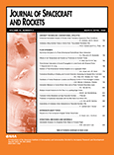
JOURNAL OF SPACECRAFT AND ROCKETS
Pioneering Discoveries in Rocket Technology.The Journal of Spacecraft and Rockets, published by the American Institute of Aeronautics and Astronautics, serves as a premier platform for disseminating cutting-edge research in the fields of aerospace engineering and space science. Established in 1964, this esteemed journal has evolved over nearly six decades, solidifying its reputation with a consistent publication history through 2024. With an impact factor positioning it within the Q2 quartile in both Aerospace Engineering and Space and Planetary Science categories, it ranks as a vital resource, featuring high-quality manuscripts that address the latest advancements and findings in spacecraft design, propulsion systems, and austere planetary exploration. The journal's rigorous peer-review process ensures that articles meet the high academic standards expected by practitioners in the aerospace sector. Researchers, engineers, and students alike will find the Journal of Spacecraft and Rockets to be an invaluable resource for both foundational knowledge and innovative research developments, advancing the future of aeronautics and astronautics.

Journal of Aeronautics Astronautics and Aviation
Elevating Research in Aerospace Engineering and Space SciencesJournal of Aeronautics Astronautics and Aviation, published by the Aeronautical & Astronautical Society Republic of China, is a premier scholarly journal dedicated to advancing knowledge in the dynamic fields of aerospace engineering and space sciences. Operating under the ISSN 1990-7710, this journal plays a pivotal role in disseminating innovative research and practice-oriented studies that address both theoretical and applicative aspects of aeronautics and astronautics. With an impressive history spanning from 2006 to 2024, the journal has established itself as a valuable resource for researchers, professionals, and students alike, featuring contributions that reflect the latest developments and trends within the industry. In the latest rankings, it holds a Q3 classification in Aerospace Engineering and Q4 in Space and Planetary Science, indicating its growing influence despite its niche scope. With an open access model that facilitates widespread readership, the Journal of Aeronautics Astronautics and Aviation strives to foster collaboration and knowledge sharing in these ever-evolving scientific domains.
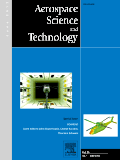
Aerospace Science and Technology
Connecting Scholars, Advancing Aerospace KnowledgeAerospace Science and Technology, published by ELSEVIER FRANCE-EDITIONS SCIENTIFIQUES MEDICALES ELSEVIER, is a leading journal in the field of aerospace engineering, boasting an impressive 2023 Q1 ranking and a significant position in the Scopus Ranks, where it stands at Rank #7 out of 153 in the Engineering - Aerospace Engineering category, reflecting its credibility and impact with a 95th percentile ranking. Since its inception in 1997, this journal has provided a robust platform for the dissemination of pioneering research and advancements in aerospace technology, focusing on innovative methodologies and applications in the aerospace sector. With a commitment to open access, researchers, professionals, and students can easily engage with cutting-edge findings that drive the industry forward. The journal not only seeks to expand knowledge but also aims to foster collaboration among scholars across the globe, making it an essential resource for anyone looking to stay at the forefront of aerospace innovation. For more information, visit its website or refer to its dedicated address at 65 Rue Camille Desmoulins, CS50083, 92442 Issy-Les-Moulineaux, France.
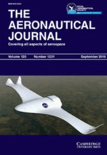
AERONAUTICAL JOURNAL
Elevating the standards of aerospace scholarship.Aeronautical Journal, published by Cambridge University Press, is a premier scholarly journal dedicated to advancing the field of aerospace engineering. With a notable impact factor, this journal holds a strong position in the academic community, ranked #53 out of 153 in the Scopus category of Aerospace Engineering, placing it in the 65th percentile. The journal has been providing a platform for groundbreaking research since its inception in 1969, and continues to be a vital resource for researchers, professionals, and students involved in aeronautics. As a Q2 journal in the 2023 Aerospace Engineering category, it offers high-quality articles that cover a range of topics within the discipline, contributing to the ongoing discourse and innovation in aerospace technologies. Although not an open-access journal, it remains accessible to a vast readership through institutional subscriptions and partnerships. The Aeronautical Journal is a crucial publication for those seeking to stay at the forefront of aerospace research and development.
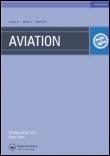
Aviation
Catalyzing collaboration in aerospace engineering advancements.Aviation, published by Vilnius Gediminas Technical University, is a leading open-access journal dedicated to the dynamic field of aerospace engineering, with an ISSN of 1648-7788 and E-ISSN of 1822-4180. Established in 2004 and set to converge in 2024, this journal aims to disseminate high-quality research that advances the understanding and application of aerospace technology. With an impact factor reflective of its contribution to the discipline, Aviation ranks at Q4 in the Aerospace Engineering category and occupies the 80th position out of 153 in Scopus, highlighting its growing significance among scholarly publications. By providing free access to its content since 2018, the journal enhances its reach and encourages collaborative efforts in the academic community, catering to researchers, professionals, and students eager to explore innovative studies and findings within aerospace engineering. Based in Lithuania, this journal serves as a vital resource for those aiming to contribute to the future of aviation.
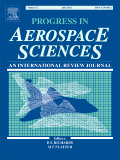
PROGRESS IN AEROSPACE SCIENCES
Shaping the sky with high-impact research and collaboration.PROGRESS IN AEROSPACE SCIENCES is a prestigious journal published by PERGAMON-ELSEVIER SCIENCE LTD, recognized as a leading platform in the field of aerospace engineering, mechanical engineering, and mechanics of materials. With an impressive history dating back to 1961, the journal covers a wide spectrum of topics pivotal to advancing aerospace technology and innovation. Its recent ranking as Q1 in multiple engineering categories underscores its significance, ranking #1 in Aerospace Engineering and placing within the top 20 percentile in both Mechanical Engineering and Mechanics of Materials, according to Scopus assessments. Researchers, professionals, and students looking to engage with high-impact research will find PROGRESS IN AEROSPACE SCIENCES an invaluable resource, offering insights into cutting-edge developments and methodologies. Although it does not operate under an open-access model, the journal upholds rigorous peer-review standards, ensuring that the published content meets the highest academic integrity. Situated in the United Kingdom, it plays a critical role in fostering international collaboration and knowledge-sharing in the aerospace sector.

CEAS Space Journal
Advancing aerospace knowledge for tomorrow's explorers.CEAS Space Journal, published by SPRINGER WIEN, serves as a critical platform for advancing knowledge in the fields of aerospace engineering and space science. With an ISSN of 1868-2502 and an E-ISSN of 1868-2510, this journal has been at the forefront of scholarly communication since its inception in 2011, showcasing cutting-edge research that spans to the present day (2024). The journal holds a solid reputation, ranking in the Q2 quartile for Aerospace Engineering and Q3 for Space and Planetary Science as of 2023, illustrating its impactful contributions within these disciplines. Scopus rankings further underline its prominence, placing it in the 70th percentile among aerospace engineering journals. Although it is not an open access publication, the insights published in the CEAS Space Journal are invaluable for researchers, professionals, and students alike, providing essential studies and reviews that push the boundaries of aerospace innovation and planetary exploration. The journal's commitment to quality and rigor makes it an indispensable resource for anyone looking to deepen their understanding of contemporary challenges and technological advancements in space science.
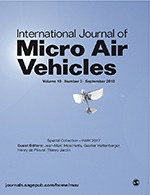
International Journal of Micro Air Vehicles
Unleashing Potential in Micro Air Vehicle DevelopmentThe International Journal of Micro Air Vehicles, published by SAGE Publications Ltd, stands as a pioneering platform for cutting-edge research in the rapidly evolving field of micro air vehicle (MAV) technology. With an ISSN of 1756-8293 and an E-ISSN of 1756-8307, this journal caters to a diverse readership, including aerospace engineers, researchers, and industry professionals who are at the forefront of innovation in aerospace engineering. It holds a commendable position within the Q3 category of Aerospace Engineering for 2023 and is ranked 65th out of 153 in Scopus, placing it in the 57th percentile among its peers. As a vital resource since its inception in 2010, the journal emphasizes advancements in design, performance, and applications of MAVs, while facilitating knowledge sharing and collaboration across disciplines. Although it operates on a subscription model, the journal ensures accessibility of pivotal research findings for professionals and scholars alike, aiming to shape the future of aerospace applications through rigorous academic inquiry.
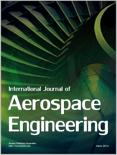
International Journal of Aerospace Engineering
Charting the Course for Future Aerospace SolutionsThe International Journal of Aerospace Engineering, published by HINDAWI LTD, stands at the forefront of innovation and research in the field of aerospace engineering. With an impact factor reflecting its contributions to the discipline and classified in Quartile 3 (Q3) for the year 2023, this journal provides a platform for high-quality, peer-reviewed articles that delve into advancements and challenges in aerospace technology and applications. Since its inception in 2008, the journal has embraced an Open Access model, promoting unrestricted dissemination of research findings to foster collaboration and knowledge sharing among researchers, professionals, and academia. The journal covers a broad spectrum of topics, aiming to enhance understanding and give insight into aerospace engineering's multifaceted aspects. With its coverage in the Scopus database, ranking 71 out of 153 in the aerospace engineering category, the journal is a valuable resource for those engaged in this dynamic field, ensuring that high-impact research receives the visibility it deserves.

Propulsion and Power Research
Leading the Charge in Open Access Research.Propulsion and Power Research, published by KEAI PUBLISHING LTD, is a leading Open Access journal that has been advancing the field of propulsion and power systems since its inception in 2012. With its commitment to fostering scientific discourse and innovation, the journal has gained a prominent position within academia, achieving a Q1 ranking in multiple categories such as Aerospace Engineering, Automotive Engineering, and Fluid Flow and Transfer Processes as of 2023. With an impressive ranking of #18 out of 153 in Aerospace Engineering and consistent recognition in the Scopus rankings, the journal explores critical advancements and research findings that propel the industry forward. As an Open Access publication, it ensures that groundbreaking research is readily available to a broad audience, enhancing collaboration between researchers, practitioners, and students. The journal's scope encompasses a wide range of topics within propulsion and energy solutions, making it an essential resource for anyone keen on discovering significant developments in this dynamic field.